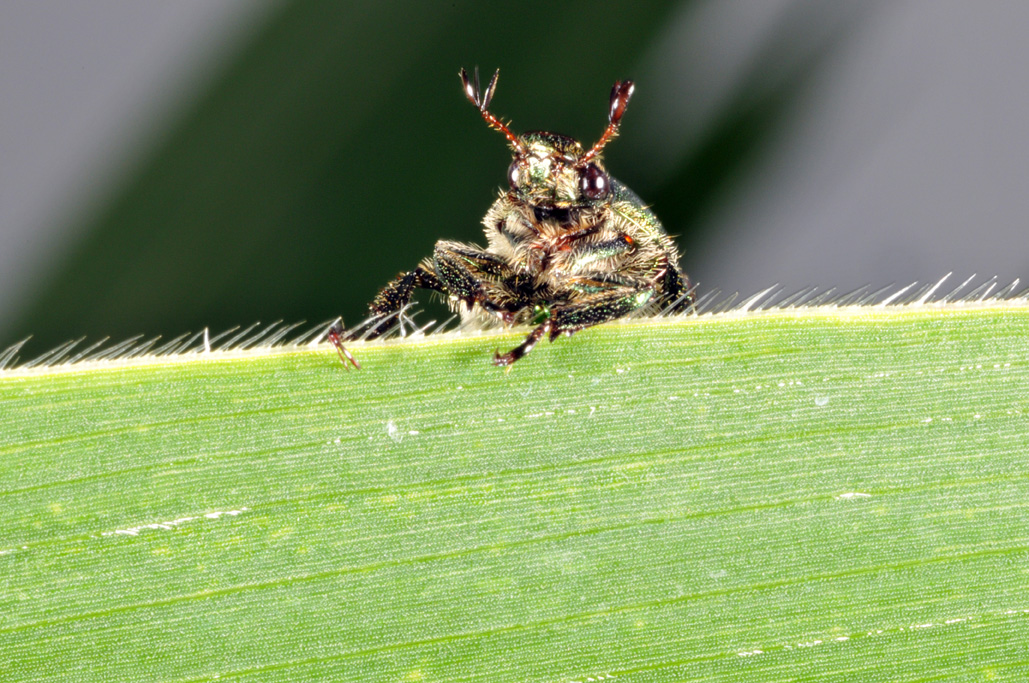Pheromone traps placed on campus by Purdue’s Turfgrass Entomology & Applied Ecology program have detected emergence of Japanese beetle. Within two weeks, most areas in the state should be seeing this notorious pest in crops and on trees, shrubs an flowers around the home.
This year’s adults are the result of eggs that were laid by female beetles last summer. After these eggs hatched, the grubs immediately begin to feed on a wide variety of roots and decaying organic matter in the soil. This feeding is typically not noticed and not economic. They continue feeding until cold temperatures prompt them to move deeper in the soil profile to overwinter. Early in spring, the surviving grubs return to near the soil surface to feed and grow through their final and 3rd larval stage. This is when they can cause problems in field crops. Spring root feeding by the grubs can result in serious damage to early-planted crops, especially corn. Fortunately, we have heard of very few grub problems in recent years.
Japanese beetles are generalists both as adults and larvae and will feed on more than 350 different species of plants, but are especially fond of roses, grapes, smartweed, soybeans, corn silks, flowers of all kinds, and overripe fruit. Beetle damage to cultivated crops is often minimal and defoliation (leaf removal) on soybean typically looks much worse than it is, and is often most severe along borders, where “drive-by scouting” tends to occur. The beetles use an aggregation pheromone (also the attractant used in bait traps), and often congregate in several areas of a soybean field, feeding on and mating in the upper canopy. Damage to soybean leaves usually looks a lot worse than it is, and is typically confined to field edges. The beetles’ iridescent, metallic color also frequently catches the attention of those doing “windshield” field inspections. Closer inspection will often reveal that weeds (e.g. smartweed) have made fields even more attractive to the beetles. Look for more on this pest in future issues of Pest&Crop.



